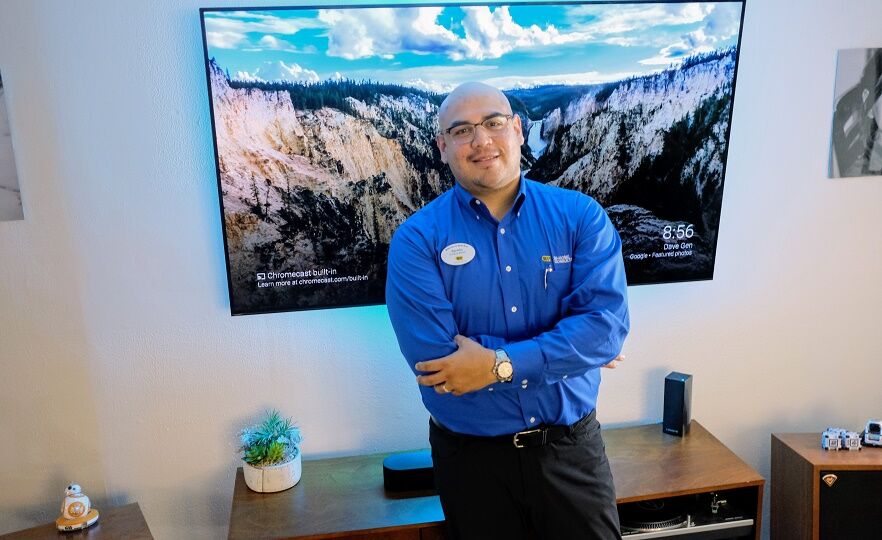Fermin Saldana knows a thing or two about how to turn a house into a bona fide smart home.
He’s an In-Home Advisor for Best Buy in San Antonio, where he visits customers’ homes every day to give them free consultations on tech products and services. But he doesn’t just talk about the gadgets, he lives with them, too. Fermin has a smart thermostat, smart lights and voice assistants throughout his house.
When it comes to smart home devices, there are great options at a variety of price points. Fermin shared some budget-friendly tips on how to get started.
It’s OK to start small
You don’t have to spend a lot of money to start tapping into convenience and excitement of smart home technology. Most people start small and build from there.
Fermin recommends starting with a smart plug or smart switch, such as those from Wemo. Prices start at under $30 and allow you to control any outlet or light switch from your smartphone.
“That’s probably the most inexpensive way to start adding some smart devices to your home,” he said.
Another popular option is a Google Home or Amazon Echo voice assistant. Those devices, which double as smart speakers, start at about $50.
“That gets you the voice-control aspect,” Fermin said. “You kind of feel special because you’re talking to the voice assistant and telling it to turn on or off a device — and it’s actually happening.”
Although a bit more expensive, many people start with a smart thermostat. Some are drawn to the convenience while others like the energy savings.
“Sometimes people think they’re not going to use that, but they don’t realize it’s a convenience factor,” Fermin said. “It’s the automation portion that’s really the advantage. When you leave the house, Nest goes into away mode and starts saving energy for you.”
It’s easy to add on
Looking to take your smart home to the next level? It’s easy to add more devices over time.
Fermin loves smart lighting. He can use his Google Home to control the lights by voice, and he even has motion sensors in his bathrooms and hallways that trigger the lights to turn on.
“I bought the Philips Hue starter kit, then started adding more light bulbs,” he said. “Now every single bulb in my house is a Philips Hue.”
There are numerous other options, including smart locks, doorbells and security cameras. However, Fermin recommends sticking with devices that work together seamlessly, such as Samsung SmartThings– or Nest-compatible products.
“Most of these devices are meant to be do it yourself, but you don’t want to have to access five different apps on your phone to control your system,” he said. “There is some planning involved, but it’s not difficult.”
It begins with Wi-Fi
There is a seemingly endless array of cool smart home gadgets, but Fermin often starts by talking to his customers about something a bit less exciting: a Wi-Fi router.
Many smart home devices rely on Wi-Fi, but most older routers weren’t designed to handle the number of connected devices found in the modern household. Just think how many computers, tablets and smartphones you have on your network. And many of these new smart home products also require Wi-Fi connections.
Most of his clients opt for whole-home Wi-Fi that uses multiples devices, called nodes, to create a strong, dependable wireless connection throughout the entire home. Leading products include the Google Wifi, eero Mesh Wi-Fi System and Netgear Orbi.
“Your first smart device is probably going to be your Wi-Fi. You have to start there,” Fermin said. “We can do all these cool things, but none of them can happen if we don’t have a good backbone.”
To learn more about smart home products, visit your local Best Buy store or view the assortment at BestBuy.com. Or you can schedule a time for an in-home advisor, like Fermin, to come out to your home for a free consultation.


